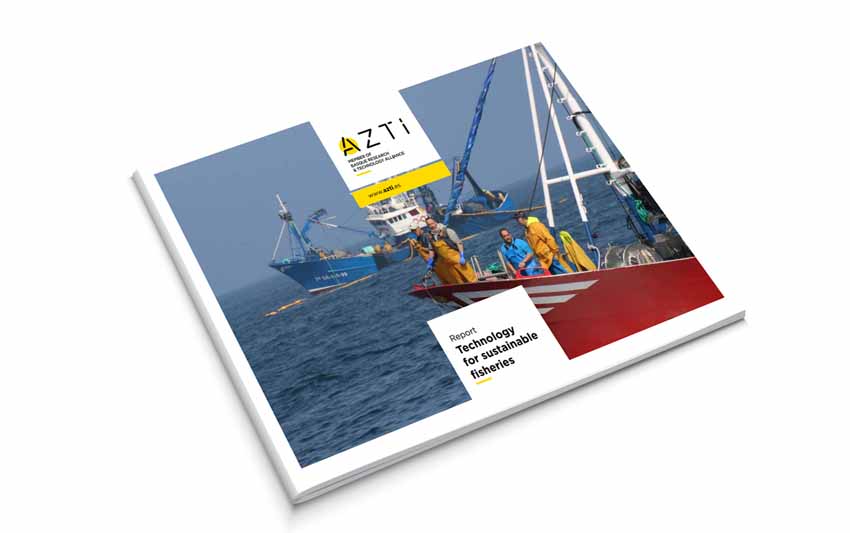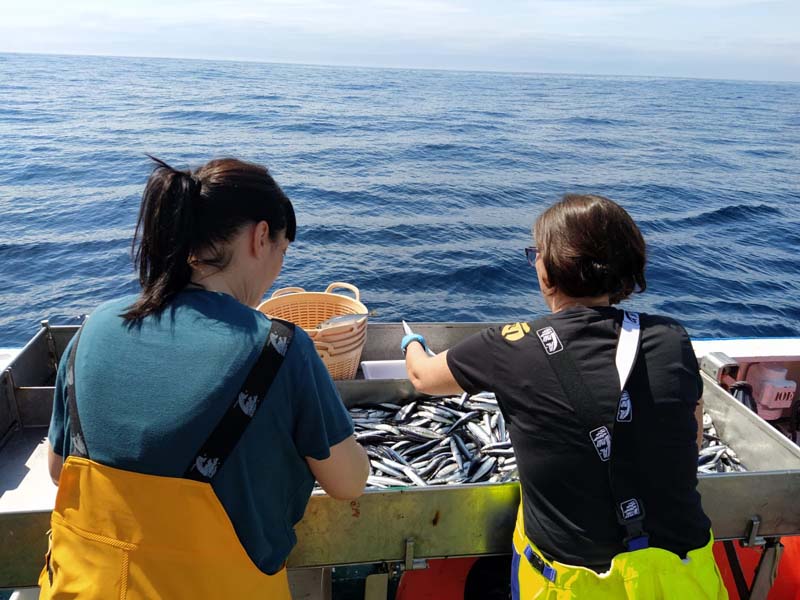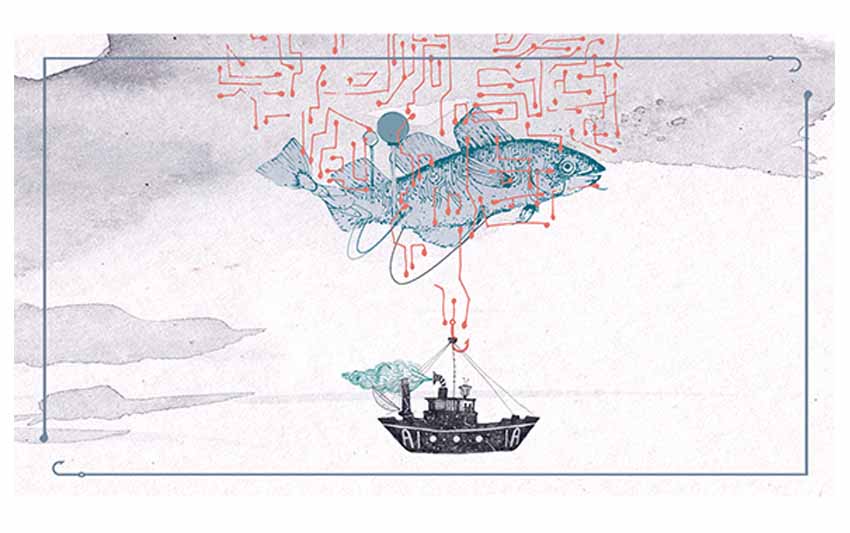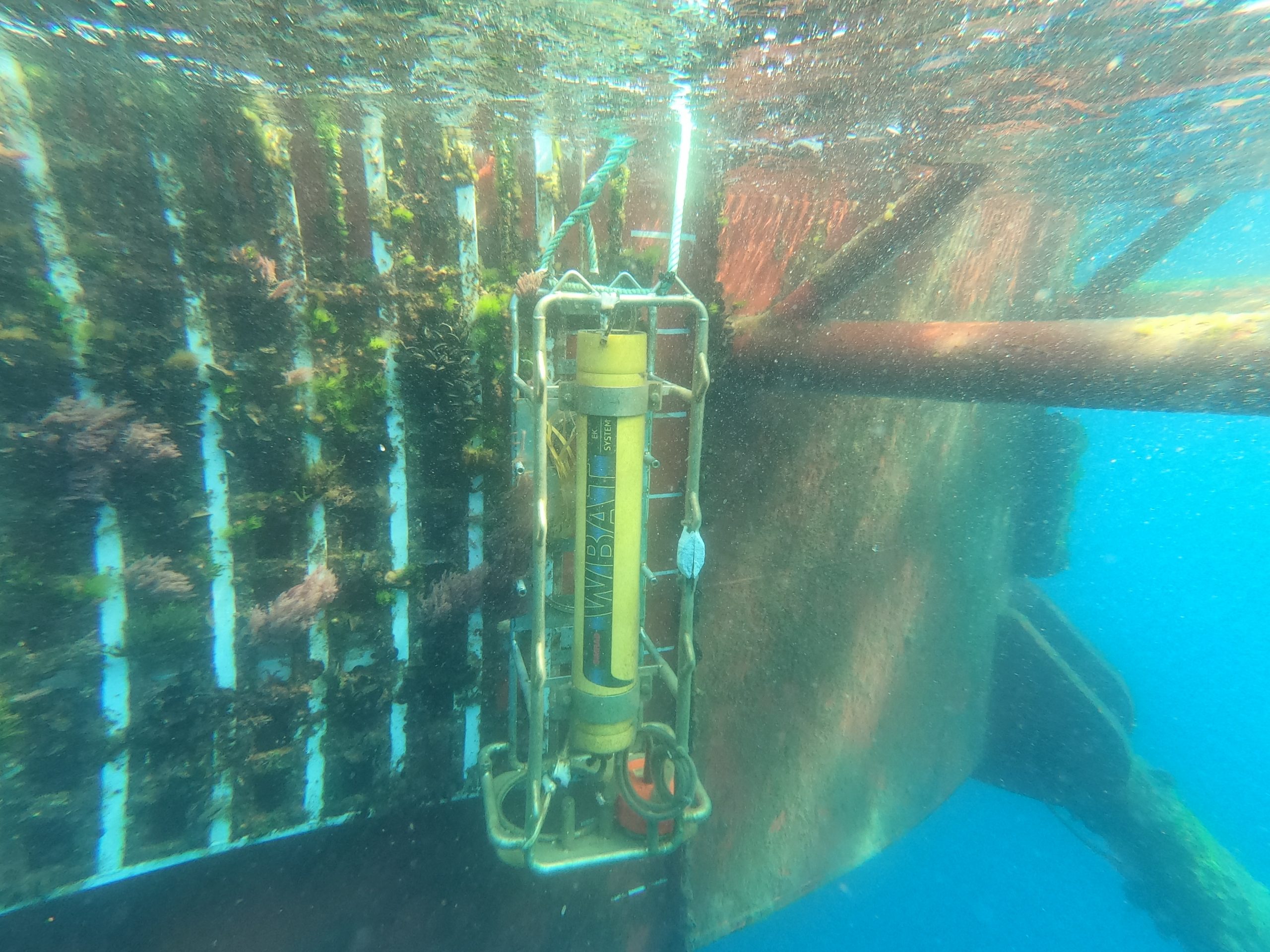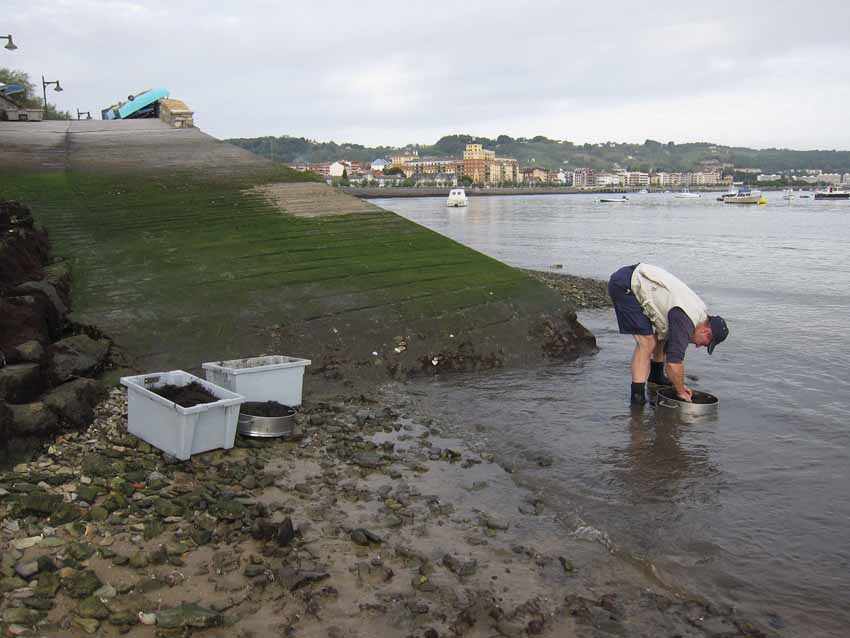AZTI report warns of critical impact of climate crisis on oceans and their resources
Últimas noticias
Digital Transformation of the Fishing Fleet: AZTI Explores the Future of the Industry with AI and Sustainable Solutions
The replica of the San Juan will set sail on a scientific mission thanks to an agreement between Albaola and AZTI.
Artomaña Txakoli Achieves the Best Enviroscore Category (A), as a Result of Its Environmental Commitment
- The technology centre publishes a comprehensive report that provides relevant data on the transformation of the oceans and their resources due to the climate crisis.
- Increases in temperature and sea level or changes in migration and species distribution are some of the effects that are being measured and monitored in order to make scientifically based decisions.
- The publication serves as a preview of the 28th Climate Summit, which takes place from 30 November to 12 December in the United Arab Emirates.
- Download: https://www.azti.es/en/productos/marine-climate-change-report/
Sukarrieta, 27 November 2023- The AZTI technology centre, specialising in marine and food research, has published a complete report that reviews decades of research work and commitment to finding a scientific response to the impact of climate change on the seas and oceans.
The document, which can be downloaded from the AZTI website provides relevant data on the accelerated and unprecedented transformation that these ecosystems are undergoing and serves as a tool to raise awareness, both among institutions and the general public, of the need to act now to protect and safeguard a key element in marine and terrestrial life.
Índice de contenidos
Temperature and sea level rise
AZTI’s report includes, for instance, some of the main conclusions derived from decades of continuous measurements in the Bay of Biscay. During this time, the technology centre has played a crucial role, collaborating with various institutions and agents, in the creation of a Marine Climate Change Observatory whose mission is to monitor trends in the physical, chemical and biological conditions of the sea and coastline, assess current and future impacts, and contribute to informed decision-making in terms of adaptation and mitigation.
Regarding sea temperature, monitored monthly since 1986, experts from the Basque technology centre state that it has increased between 0.19ºC and 0.26ºC per decade since 1980, particularly in the southeast and coastal area. “If this trend continues, by the end of the century it is expected to reach an increase of 3.5ºC”, points out Guillem Chust, coordinator of the climate change area at AZTI.
Global warming of the oceans, as indicated by AZTI, will cause a reduction in phytoplankton and zooplankton biomasses of 6% and 11% at a global level, respectively, also by the end of the century; the displacement of marine life towards the poles; and may have consequences such as hotter summers in coastal cities.
“Perhaps the most worrying aspect of this increased temperature is that it carries with it an uncertainty difficult to delimit due to the partly unknown role that the ocean may play in climate regulation and the multiple responses of marine ecosystems”, adds the AZTI expert.
Another aspect that AZTI monitors is sea level and waves. According to the data collected by the centre, sea level has been rising at a rate of 1.5 to 3.5 centimetres per decade since 1990, and projections indicate that this rise could reach between 50 and 80 centimetres along the Basque coast by the end of this century.
On the other hand, significant increases in extreme wave heights have been recorded in the southeast gulf with an average increase of 16 centimetres per decade. According to the report, this phenomenon is probably related to the stormy conditions experienced in the last decade and is having a noticeable impact on beach erosion in the area.
In terms of coastal flood risk, the results indicate that a 12% increase in the area at risk is expected by 2050 and a range of between 24% and 59% by 2100. This means that the affected area would increase from approximately 1,700 hectares at present to around 2,700 hectares by the end of the century.
“Sea level rise will have visible and worrying effects such as the expected loss of a large part of our beaches or estuarine ecosystems, such as salt marshes and seagrass meadows, which are important elements in the conservation of biodiversity and blue carbon sinks,” explains Chust.
To improve the assessment and prediction of the impact of storms on the coast, and to design measures focused on mitigating their effects, AZTI has led an initiative in which an extensive database has been developed compiling detailed information on the impact of storms on the Basque coast. In addition, tools based on videometry systems have been created to measure various wave parameters and their associated impact.
Other solutions that have been implemented include a sensor to measure the impact force of waves on coastal structures, computer models to simulate flooding processes, and an early warning protocol for waves and floods. In the town of Biarritz (France), for example, a method has been developed to analyse the frequency of occurrence of storms that could cause economic losses.
Migratory and distribution changes in fish species
Climate change and its effects are also modifying the distribution and migratory movements of the main fishing species such as anchovy and tuna, two of the pillars of the fishing economy in the Basque Country.
According to the results of the historical analysis of data on anchovy in the Bay of Biscay, the anchovy responds to oceanic-climatological conditions by advancing the start and end of the spawning period in warm years.
In particular, the warming of the sea and changes in other oceanographic variables by the end of the century could lead to an increase in the density of anchovy eggs and an increase in their spawning area, as indicated by the ecological niche models developed by AZTI.
However, it is also concluded that the anchovy is a resilient species, not very vulnerable to climate change, and is likely to be favoured by the warming of the sea if the conditions of availability of its food do not change significantly.
In the case of tuna, they are undergoing significant changes at a global level that require special attention, and one of the factors behind these changes is the climate crisis.
Aware of the importance of adapting fishing strategies to these changes, AZTI researchers have analysed the impact of climate change on the main tuna species and other large predators such as swordfish.
“After studying a historical series of data from 1958 to 2004, the projections indicate a general trend of tuna moving towards the poles by the end of the century. In terms of size, a global decrease in size of 15% is expected by 2050 due to the effect of warming on the growth of the species”, says the AZTI researcher.
In the case of bonito (albacore tuna), data collected from catch trends in the period 1981-2017 indicated an advance in the arrival of juveniles by 2.3 days per decade, associated with the warming of the sea. “A slight advance of the coastline is therefore expected in the future, especially for the beginning of the fishing season, and a slight shift of the bonito habitat towards the north,” Chust points out.
Milestone on the climate agenda
The report published by AZTI comes in anticipation of a milestone on the world climate agenda: the 28th edition of the Climate Summit (COP 28), to be held between 30 November and 12 December in the United Arab Emirates.
The summit, organised by the United Nations (UN), will present the first global assessment of progress on the objectives of the Paris Agreement, adopted in 2015 at COP21.
“This first global diagnosis will certify that we are still far from meeting the goals of not exceeding one and a half degrees of global temperature increase by the end of the century, but it will help to align efforts to accelerate climate action, including recommendations on the measures that must be implemented to bridge the gaps in the progress of climate action”, concludes AZTI’s climate change coordinator.
